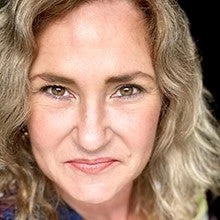Today, social media platforms engage around 4.1 billion users, more than half of the world’s population. Leveraging social media for social and behavior change communications is a natural and needed next step for addressing large-scale challenges , including the ones presented by COVID-19. The potential of social media is clear. But can social media campaigns for these issues break through the noise of the multiple messages that populate our social media feeds? And if they do, how does our “online life” translate to “real-life” behaviors? How do we measure the effectiveness and real impact of social media campaigns?
We have been discussing, designing, and thinking these issues for some time. With discussions on Using Entertainment Media to Reach the SDGs and Using Social Media to Change Norms and Behaviors at Scale, we have brought together researchers, social media and edutainment industry leaders, policy makers from different sectors, donors, and partners implementing and designing these campaigns. These conversations aim to chart a path for further use of social media for at-scale change toward development objectives.
What have we learned so far? Some of the key lessons include:
- Social media — and edutainment — can help reduce frictions and barriers that are in the way of individual action. For example, recent research shows that a low-touch social media campaign produced by Population Foundation of India and delivered through Facebook Messenger was effective in promoting online information-seeking behaviors and reshaping gender attitudes of social media users.
- Social media offers targeting capabilities that allow identifying potential beneficiaries or audiences at a very granular and detailed level. This lets social media campaigns to be designed with the richness of people’s different profiles in mind, and gain power and effectiveness as a result. For example, the World Bank is partnering with Quilt.AI in India on a campaign to promote father’s engagement in child nutrition that builds on the different profiles of fathers identified via online behaviors.
- Social media, being social by design, relies on people’s identified communities. This increases trust in messages that come from messengers that are part of the community and allows for wider and better dissemination mechanisms (i.e., people are more receptive to messages shared by their friends and relatives). For example, users of an online platform that aims to provide a space for Greek and Turkish Cypriots come together to discuss and solve societal problems reported higher levels of trust for people from the other community compared to non-users, driven by the community identity and empathy created through repeated social interactions on the platform.
- Social media campaigns can promote the download and sustained use of development apps, complementing offline interventions. For example, in the context of a broader social norms campaign supported by a World Bank education project, we are testing the effectiveness of a game and a digital library app designed for low-literacy populations in northern Nigeria. At a low cost and without social interaction, “personalized” advice from coach-bots can complement development interventions that require frequent face-to-face interactions, for example, vocational trainings.
Social media offers a unique opportunity to carry out evaluation research in an iterative manner that can inform the design of social and behavior change communications and broader policies in real time. It allows us to not only simultaneously test multiple campaigns for different subgroups across multiple settings at a low cost, but also to adjust those campaigns content and distribution strategies to improve their effectiveness.
There is a lot of promise, and a lot to learn, from the use of social media for development objectives. Most recently, we’ve been applying these lessons to work on COVID-19 information, as well as vaccine access and take-up. And by partnering with the fields of behavioral science and impact evaluation, as well as researchers, technical specialists, and social media experts, we can maximize these initiatives’ effectiveness and inclusiveness, and get a better sense of their impact.
There is still more to do to reach offline populations, and we need more ambitious public-private partnerships for targeting full ecosystems, especially in low-income settings. This is a task for all of us at the World Bank, donors, private partners, and national governments and actors. The call and challenge for scalable innovations in development investments for today’s and future crises is a great motivator.
Watch the full webinar and clinic for conducting social media research using Virtual Lab bot.
Related links:
Development Impact Evaluation (DIME)




Join the Conversation